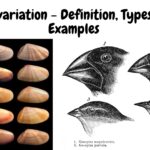IB Biology 15 Views 1 Answers
Sourav PanLv 9November 9, 2024
How can artificial pacemakers regulate the heart rate, and in what situations are they used?
How can artificial pacemakers regulate the heart rate, and in what situations are they used?
Please login to save the post
Please login to submit an answer.
Sourav PanLv 9May 15, 2025
Artificial pacemakers are medical devices designed to regulate the heart rate by delivering electrical impulses to the heart muscle. They are particularly useful in managing abnormal heart rhythms, known as arrhythmias, which can lead to symptoms such as fatigue, dizziness, or fainting. Here’s how they work and the situations in which they are typically used.
How Artificial Pacemakers Regulate Heart Rate
- Functionality:
- An artificial pacemaker mimics the function of the heart’s natural pacemaker, the sinoatrial (SA) node. It generates electrical impulses that stimulate the heart to contract. The device consists of a pulse generator (which includes a battery and circuitry) and leads (wires) that connect the generator to the heart muscle.
- Most pacemakers are “demand” devices, meaning they monitor the heart’s natural rhythm and deliver electrical impulses only when the heart rate falls below a preset threshold. This ensures that the heart beats at an appropriate rate based on the body’s needs.
- Types of Pacemakers:
- Single-Chamber Pacemakers: These typically have one lead placed in either the right atrium or right ventricle.
- Dual-Chamber Pacemakers: These have two leads, one in the right atrium and one in the right ventricle, allowing for coordinated pacing between the two chambers.
- Biventricular Pacemakers: Used in cardiac resynchronization therapy (CRT), these devices have three leads to pace both ventricles simultaneously, improving efficiency in patients with heart failure and ventricular dyssynchrony.
- Programmable Settings:
- Modern pacemakers can be programmed externally by healthcare providers to adjust pacing rates and modes based on individual patient needs and activity levels.
Situations Where Pacemakers Are Used
- Bradycardia:
- A common indication for pacemaker implantation is bradycardia, a condition where the heart beats too slowly (typically less than 60 beats per minute). This can occur due to various reasons, including sinus node dysfunction or atrioventricular block.
- Heart Block:
- Pacemakers are often indicated for patients with varying degrees of heart block (e.g., second-degree or complete heart block), where electrical signals are impaired between the atria and ventricles.
- Atrial Fibrillation with Bradycardia:
- In patients with atrial fibrillation who experience slow ventricular rates, a pacemaker may be necessary to maintain an adequate heart rate.
- Tachycardia-Bradycardia Syndrome:
- Some patients experience alternating episodes of rapid and slow heart rates; a pacemaker can help manage this condition by preventing excessively slow rates during bradycardic episodes.
- Heart Failure:
- Biventricular pacemakers are specifically used in patients with heart failure to coordinate contractions of both ventricles, enhancing overall cardiac output and improving symptoms.
- Other Indications:
- Conditions like prior heart attacks, long QT syndrome, hypertrophic obstructive cardiomyopathy, and congenital heart defects may also warrant pacemaker implantation.
0
0 likes
- Share on Facebook
- Share on Twitter
- Share on LinkedIn
0 found this helpful out of 0 votes
Helpful: 0%
Helpful: 0%
Was this page helpful?




